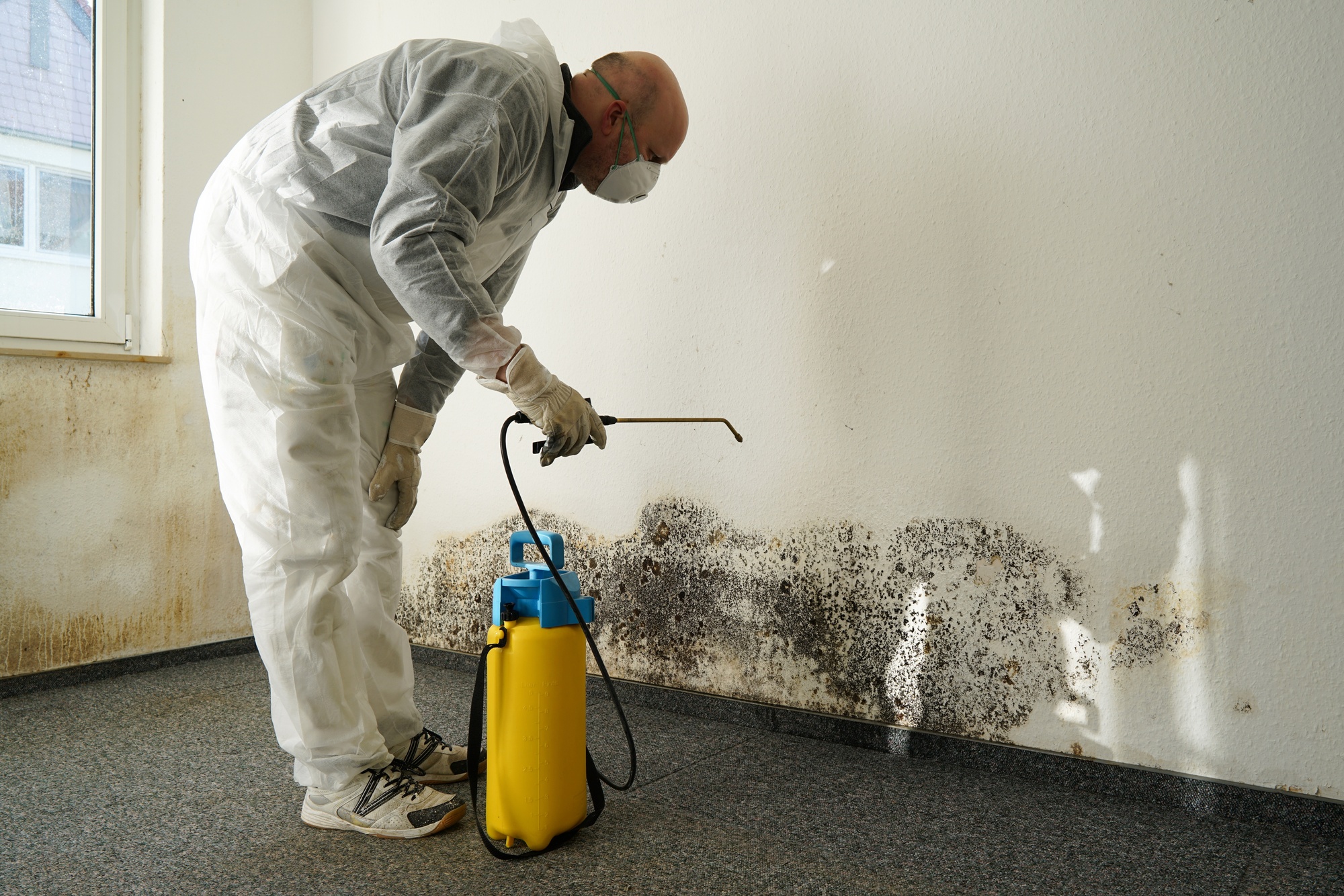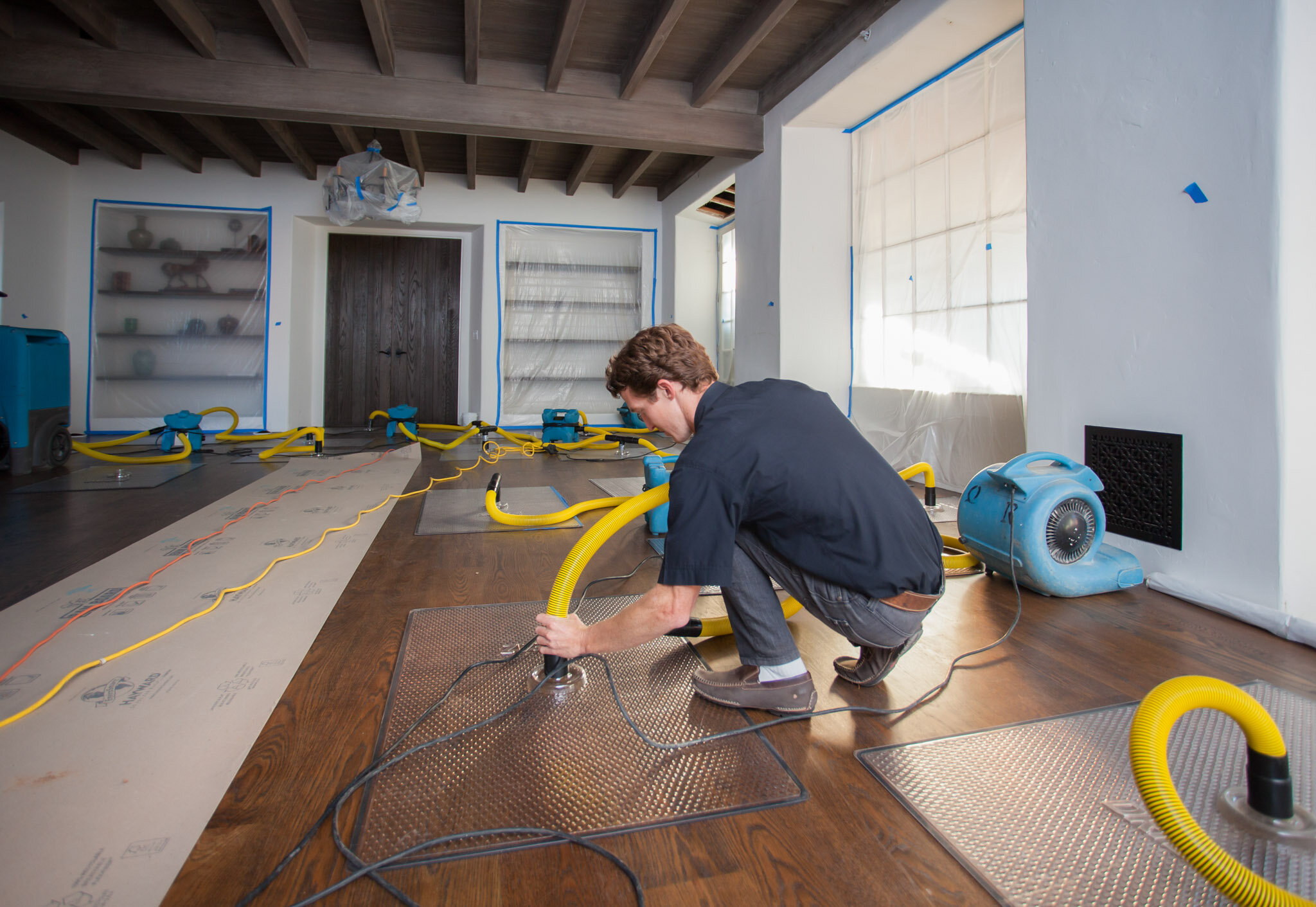Top Tips for Effective Water Damage Restoration: Protect Your Building Today
Water damage can strike suddenly, causing considerable disturbance and potential threats. Effective restoration calls for a systematic technique to lessen further injury. From reviewing the damage to executing safety nets, each step plays a vital role in securing home. Understanding these approaches can make all the difference in the after-effects of a water-related dilemma. What vital activities should be prioritized to ensure extensive defense?
Evaluate the Damage Promptly

Shut down the Supply Of Water
Shutting down the water is a necessary action in avoiding more damage during a water-related incident. When a leakage or flood occurs, instant action is crucial to lessen the level of the damage. Finding the major water shut-off valve must be a top priority. This valve is often positioned near the water meter or where the water line gets in the home. When situated, transforming the shutoff clockwise will quit the circulation of water. In situations where the major valve is unattainable, specific shut-off valves for appliances may additionally be used. Quickly shutting off the supply of water not just protects the building from extra damage yet additionally assists in the succeeding restoration procedure, guaranteeing that recovery initiatives can begin without delay.
Remove Excess Water Without Delay
Removing excess water promptly is necessary for minimizing damage and avoiding mold and mildew growth in affected locations. The longer water stays touching materials such as insulation, timber, and drywall, the better the danger of architectural damage and the development of mold and mildew. House owners should act swiftly to examine the scenario and make use of ideal tools, such as wet vacuums or pumps, to remove standing water successfully. If the volume of water is significant, speaking to specialist restoration services might be required, as they can supply specific equipment and proficiency. Furthermore, removing furnishings and personal belongings from the afflicted area can aid to lower damage and promote the total restoration procedure. Prompt activity not just safeguards residential or commercial property but also aids in a smoother recovery journey.
Dry Out the Affected Area
After removing excess water, it is necessary to dry out the damaged area completely. This includes eliminating any standing water and boosting air flow to assist in dissipation. Reliable drying will aid stop mold development and further damage.
Get Rid Of Standing Water
Promptly attending to standing water is crucial for effective water damage restoration. The visibility of stationary water can bring about additional property damage and create a setting conducive to mold and mildew growth. To alleviate these risks, it is vital to eliminate standing water as rapidly as feasible (Water Damage Restoration). This process commonly includes making use of completely submersible pumps, wet vacuum cleaners, or specialized extraction tools. Specialists suggest assessing the depth and level of the water prior to choosing the proper approach for elimination. Security preventative measures ought to additionally be taken, consisting of putting on safety equipment and making sure electrical power is shut off in affected locations. As click to investigate soon as the standing water is efficiently eliminated, the drying procedure can begin, additionally safeguarding the property from ongoing damage
Boost Air Circulation

Examine for Mold Growth
Mold growth is a major concern adhering to water damage, as it can result in wellness concerns and structural damage. After any type of flooding or leaks, it is important to carry out a comprehensive assessment of the affected locations. This includes checking surprise rooms such as behind walls, under rugs, and in cellars or attics where wetness may remain. Signs of mold and mildew include a moldy odor, discoloration on surface areas, or noticeable growth. Building owners must utilize protective equipment when inspecting, as mold spores can present health and wellness threats. Water Damage Restoration. If mold and mildew is discovered, it is important to address it instantly, as postponing remediation can intensify the trouble and boost the threat of severe wellness issues for owners. Early intervention is essential to effective mold and mildew monitoring
Repair and Bring Back Broken Structures
When resolving water damage, it is crucial to very first evaluate the architectural integrity of the affected locations (Water Damage Restoration). This analysis aids determine possible threats and informs the required repair service strategies. Engaging specialist restoration solutions ensures that the restoration procedure is conducted securely and effectively
Assess Structural Stability First
Prior to initiating any type of water damage restoration, it is important to analyze the structural honesty of the affected location. This examination helps recognize any compromised elements, such as structures, wall surfaces, or beam of lights, which may present safety dangers. Checking for indications of bending, splitting, or mold and mildew growth is important, as these indicators can disclose underlying damage that calls for prompt focus. Furthermore, understanding the extent of the damage can guide restoration efforts and figure out whether repair services are feasible or if substitute is essential. It is very important to record searchings for completely, as this details can be important for insurance coverage claims or future referral. Prioritizing architectural assessment assurances that restoration efforts continue safely and effectively, inevitably shielding the home and its residents.

Use Specialist Restoration Services
Utilizing expert restoration services is important for effectively fixing and bring back damaged structures after water cases. These experts have the necessary training, tools, and experience to minimize and assess water damage thoroughly. They can identify covert concerns, such as mold and mildew development and structural weak points, that might not be promptly obvious. Expert solutions additionally employ advanced drying methods and devices, guaranteeing that all dampness is removed to stop more damage. Additionally, they comply with market criteria and laws, making certain that the restoration process is reliable and secure. By engaging restoration professionals, building proprietors can expedite recuperation, lessen long-lasting damage, and inevitably safeguard their financial investment - Water Damage Restoration. This proactive strategy is necessary in keeping the stability and security of affected frameworks
Prevent Future Water Damage
To efficiently protect against future water damage, home owners need to take on a positive approach to repair and maintenance. Normal inspection of roofs, downspouts, and gutters is crucial; blocked seamless gutters can bring about water overflow and roof leakages. Furthermore, checking for leaks in pipes components and home appliances can prevent prospective damage. House owners should additionally think about setting up sump pumps in cellars or low-lying locations to manage water build-up. Sealing fractures in foundations and making sure correct water drainage around the residential or commercial property are important action in securing against water intrusion. Furthermore, maintaining moisture degrees with dehumidifiers can prevent mold and mildew growth. By implementing these safety nets, homeowners can greatly minimize the danger of water damage and secure their building for the lengthy term.
When a water damage event occurs, it is vital to examine the damage right away to mitigate further issues. Eliminating excess water quickly is essential for minimizing damage and protecting against mold development in influenced areas. Swiftly resolving standing water is essential for effective water damage restoration. The presence of stationary water can lead to additional residential property damage and develop an environment conducive to mold growth. Before initiating any kind of water damage restoration, it is vital to assess the structural honesty of the afflicted location.